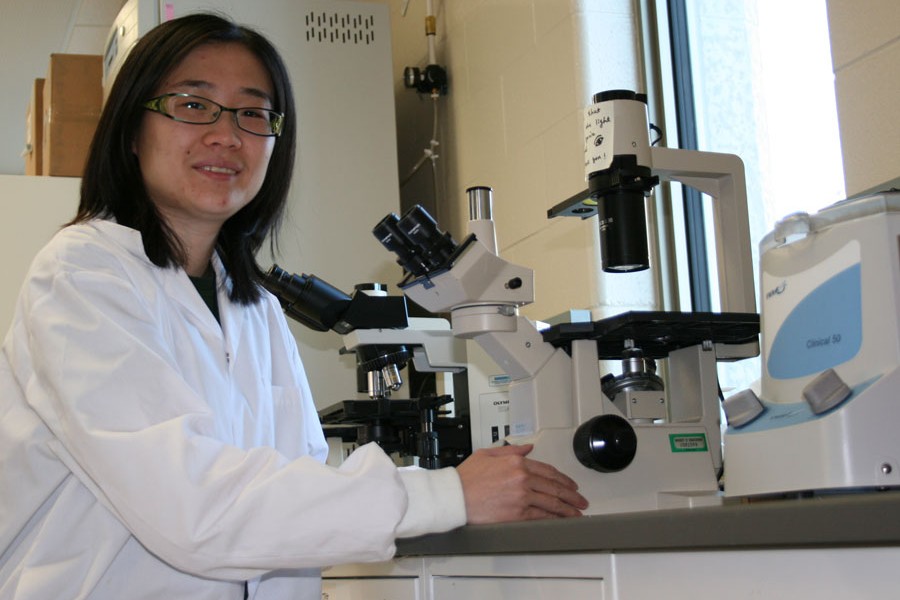Understanding the work of white blood cells
Pharmacology PhD student Yang Su peers through an advanced microscope in a lab at the College of Medicine, trying to understand how white blood cells migrate from the bloodstream to sites of injury or infection.
By University Communications "When the tissue gets injured or infected, white blood cells or leukocytes will move out of the blood vessel and migrate towards the damaged tissue to clear the enemy or those dead cells," she explained. "During this process, leukocytes need to first attach to the cells that constitute the inner layer of small blood vessels, and then squeeze through the gap between those cells."
"When the tissue gets injured or infected, white blood cells or leukocytes will move out of the blood vessel and migrate towards the damaged tissue to clear the enemy or those dead cells," she explained. "During this process, leukocytes need to first attach to the cells that constitute the inner layer of small blood vessels, and then squeeze through the gap between those cells."
When the process works as it should, the infection is cleared and the injured tissue begins the process of healing. When it goes awry, such as in a stroke, heart attack, or a full-body infection, the white blood cells can attack the body's own tissue, causing more damage.
Su, part of a research team led by Associate Professor of Pharmacology Lixin Liu, came from the Beijing Institute of Technology and is supported by the U of S-China Doctoral Scholar Partnership program. While she is happy to be studying and conducting research at the U of S, she admits it has been a challenge.
"In the first year of my PhD study, I took a course called Graduate Pharmacology. At that time my English wasn't good enough, and this course requires two midterm exams, one final exam, one oral exam and one presentation. It was a huge challenge for me as I needed to do lots of lab work at the same time," she said.
She persevered, supported by colleagues who had taken the course before. She was also helped along by her professors, who encouraged her to refine her presentation "sentence by sentence," and devoted their own time to give students a full afternoon's tutorial.
"After more than six months of hard work, I got a high score in this course," Su said. "I really appreciated the help from the professors in our department. They are always kind and helpful if I ask them for help, even if they are not my supervisor."
Now in the research phase of her PhD, Su is looking specifically at the process by which white blood cells are alerted that there is an infection or injury. Using a technique called intravital microscopy, she and her colleagues watch how the leukocytes move, helping them determine how the process works.
"We can see the movement of leukocytes, first moving out of the blood vessel and then towards the inflamed tissue. By analyzing the path and the movement pattern of leukocytes, we can infer the mechanisms behind this phenomenon," she explained.
Understanding how leukocytes work could inform future studies aimed at finding ways to allow the cells to do their job of protecting the body while suppressing their destructive behavior.
While Su is focused on completing her doctorate, her love of research is shaping her plans for the future, perhaps as a research scientist at a university, for a commercial company or in a government lab. Like most people, she hopes to contribute something meaningful, but is modest in her expectations.
"I hoped to have impact on my world but not the world. I just hope that someday my family and the people I care about can be proud of my work, and if I can earn the respect from others who work in the same field, that would be the best."

